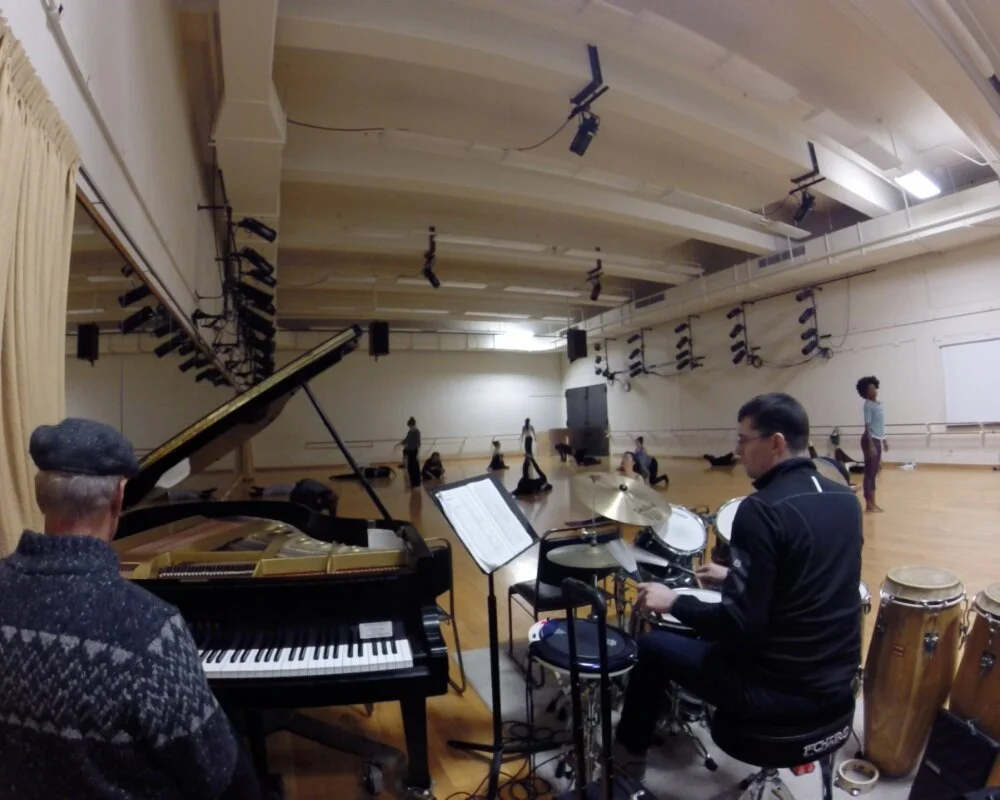Every type of music has aspects that make them unique, but making music with dance has a few things that make it stand alone.
Music for dance serves a practical purpose outside of itself. To me, this is the biggest difference. Music for dance exists because it is needed. Once the dance begins, the dancers need the grounding pulse to sync with one another. But they also need the rhythm that propels; the color of texture and harmony; the line of melody, and the structure of form to dance the dance. Good music for dance helps dancers learn and deeply encode choreography in their body and understand the space they’re creating with movement. A bit like a wave that surfers ride, it provides a constant lift that they can ride up and back down.
The dance studio is both a performance space and a laboratory. Dance classes and rehearsals are daily rituals where dancers grow personal knowledge within their bodies, and a collective experience is created. All participants (including musicians) simultaneously perform for one another and experiment with new ways of doing things. This hybrid space allows dance musicians to build the skills, knowledge, experience, and relationships on the path to becoming more complete, supportive, and generous collaborators.
There are some key orientations or “ways of being” that dance musicians need in order to succeed.
Commit to experimentation, not perfection. To be successful as a dance musician, one must let go of note-perfect execution as a goal, and begin to understand “failure” not as an end but as an opportunity to make decisions and continue without hesitation. Dance class is the time and place for experimentation, risk-taking, and accepting success or failure with equal boldness.
Be unafraid of failure. Dancers take risks and fail daily, in a communal space. You must do the same in order to give them what they need. You cannot be afraid of failure or try to avoid it. I’ve played music that seemed "wrong" to me based on criteria from other contexts, only to have the dancers and teacher praise it enthusiastically, because it created the right energy in the space, at that moment.
Treat your playing with gravity, however simple or uninteresting it may seem at first. This means a shift of focus from executing the skill of playing music to making music for a moment.
Make musical decisions quickly, stick with them and see them through. All of your prior musical training and experience will be employed, with only 4 counts notice. “5-6-7-8” and now you are playing! Often, there is little time to prepare and the score is the dance movement in front of you.
Be musically courageous! You’ll develop musical courage playing for dance class. Have you ever had to play an “adagio” on djembe? Have you ever had to improvise faster than you can comfortably play, or play an instrument you’re not even that adept at? You'll face challenges like these, and you’ll do figure it out!
